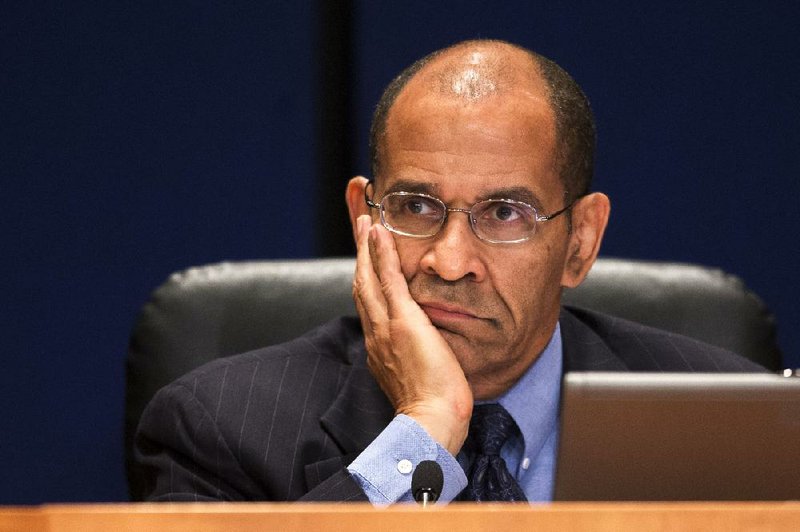WASHINGTON -- Pilot errors, inadequate training and confusion about the airplane's automated controls all contributed to the fatal Asiana Airlines Inc. crash in San Francisco last year, U.S. investigators concluded.
The pilots weren't trained well enough on the computerized controls and made numerous mistakes while landing, the National Transportation Safety Board determined at a hearing Tuesday. It said the speed-protection system on the Boeing Co. 777-200ER should be studied to ascertain whether it needs redesigning.
The findings bring to a close a U.S. investigation into the July 6 accident, which killed three people. The crash was the first commercial airline accident in the U.S. with passenger fatalities since 2009.
"We have learned that pilots must understand and command automation, and not become over-reliant on it," acting agency Chairman Christopher Hart said after the hearing. "The pilot must always be the boss."
Boeing said it "respectfully disagrees" with the safety board's findings on its cockpit automation. "We note that the 777 has an extraordinary record of safety," the Chicago-based company said in an emailed statement.
South Korea-based Asiana said it agreed with the safety board's findings in an emailed statement. The airline has already made the changes to its training that the safety board recommended, it said.
The plane struck a seawall after the pilots allowed the jetliner to get almost 40 miles per hour slower than target speed as they neared the runway. The pilots, without realizing it, disabled the automated controls that in most situations would have kept them at a safe speed, the safety board said.
The pilots mismanaged their approach to the airport, failed to notice the deteriorating speed and lights near the runway showing they were too low, and then didn't abort the touchdown, which they were trained to do, according to the safety board. The two pilots also didn't communicate as they each made changes to the cockpit automation, the board found.
Pilot fatigue on the Seoul-to-San Francisco flight also played a role. The crew on the South Korean airline was landing in San Francisco at 3:30 a.m. Korea time, which probably hurt their performance, the safety board said.
The tired pilots made a series of "cascading errors" that began miles away from the airport, Roger Cox, a safety board investigator, said at the hearing.
An underlying reason for the accident was that Captain Lee Kang Kuk, a veteran of the airline who was being trained on the Boeing 777 wide-body, didn't realize he had disabled the jetliner's automatic speed protection system as he was trying to descend, according to the board.
Lee told investigators after the crash he thought "the auto-throttle should have come out of the idle position to prevent the airplane going below the minimum speed" for landing, the safety board said.
Another Asiana captain, Lee Jung Min, who was making his first flight as instructor pilot, was seated in the co-pilot's seat. He would have reactivated the speed protections had he flicked one switch on the final descent. He told investigators afterward that he recalled making the change, but the plane's data recorder showed otherwise, according to the safety board.
Board member Robert Sumwalt, a former airline pilot, said he spoke to a senior airline training pilot after the accident to determine whether average flight crews understood how the 777's speed protection worked.
"He said, 'To be honest with you, I don't think it was widely known at all,'" Sumwalt said. "I think that the problem was a lot more widespread than we may have thought."
At the same time, the cockpit display showed that the plane's air-speed protections had been disabled and the pilots should have seen that, Cox said.
"There are plenty of cues in front of you telling you what you have done, but you have to look at them," he said.
While the safety board voted down a motion to recommend changing Boeing's auto-throttle design, it said the Federal Aviation Administration should study whether such changes are needed. If all the same errors had occurred and the plane's speed protection had worked, it would have added thrust 20 seconds before the crash, the board concluded.
The unintended disconnection of the plane's speed-protection system was listed as one of the causes of the crash. Complexities of that system, which was "inadequately" described to the flight crew, contributed to the accident, the board found.
Boeing has maintained that crew actions caused the accident. Various 777 models have been flown for 200 million hours and made more than 55 million safe landings, the company said in its statement.
The investigation showed that "all of the airplane's systems performed as designed," it said.
The 777, the largest twin-engine jetliner, began commercial service in 1995 and has one of the industry's best safety records, according to Boeing's annual aircraft accident summary.
While Asiana said in a submission to the safety board earlier this year that the pilots were at fault, it urged the safety board to find that issues with the plane's automation were also to blame.
Incidents with an almost identical auto-throttle issue arose in certification of the Boeing 787, board documents show.
The Federal Aviation Administration required Boeing to add a note to the then-new 787's documentation warning pilots they could lose speed protection under the same circumstances, according to the documents.
A test pilot flying the 787 in 2010 said he was surprised to learn that the plane's speed protection could be lost in some cases. The changes weren't required for the 777.
A Section on 06/25/2014

